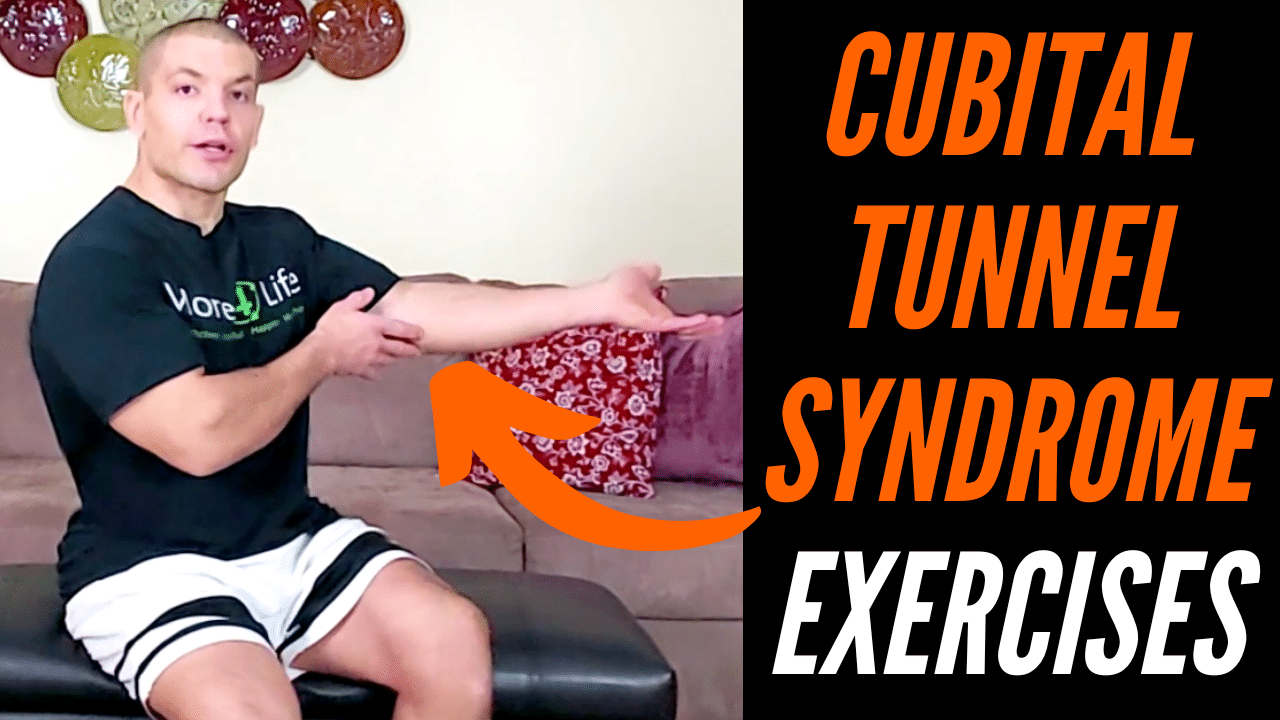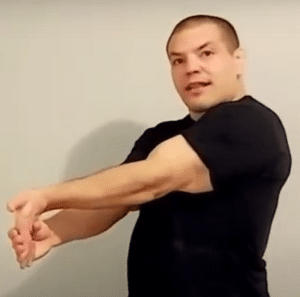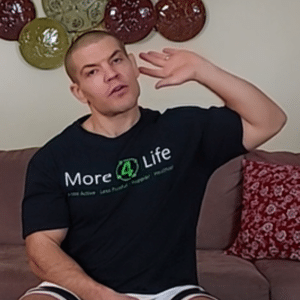Looking For Cubital Tunnel Syndrome Exercises?
Watch the video to learn what causes cubital tunnel syndrome, plus exercises and other treatments for cubital tunnel syndrome.
What is Cubital Tunnel Syndrome?
Cubital tunnel syndrome is a com compression, entrapment, or tensioning f the ulnar nerve along the inside of the elbow.
At the inside part of the elbow, the ulnar nerve runs through a structure called the cubital tunnel.
Although the cubital tunnel protects the ulnar nerve, the structures are very superficial and are prone to injury.
Accidental compression to this area can cause numbness and tingling that most people refer to when hitting their “funny bone.”
Symptoms of Cubital Tunnel Syndrome
The ulnar nerve controls the sensation and muscle movements of the inside part of the forearm, wrist, hand, and fingers.
As a result, an ulnar nerve dysfunction at the cubital tunnel can impair the normal functioning of these structures.
Symptoms of cubital tunnel syndrome can include:
- Numbness or tingling in the hand and fingers
- Weakness in the hand and fingers
- Pain in the elbow or forearm
- Decreased grip strength
- Difficulty with fine motor skills
What Causes Cubital Tunnel Syndrome?
As mentioned before, cubital tunnel syndrome is the entrapment of the ulnar nerve at the inside of the elbow.
There are several factors that can contribute to the development of cubital tunnel syndrome.
Causes of cubital tunnel syndrome include:
- Repeated or sustained elbow bending: Repetitive bending of the elbow, or bending for an extended period of time, such as when using a computer or holding a phone, can put pressure on the ulnar nerve. Other examples include working as a factory assembly line worker or sleeping in an elbow bent position for the entire night.
- Elbow injury: An injury to the elbow, such as a blunt force trauma, fall on an outstretched arm, fracture, or dislocation, can cause inflammation or swelling that can lead to the compression of the ulnar nerve.
- Arthritis: Elbow joint swelling and inflammation caused by rheumatoid arthritis or bone spurs from osteoarthritis can cause compression of the ulnar nerve in the cubital tunnel.
Treatment For Cubital Tunnel Syndrome
Now that you know what causes cubital tunnel syndrome, you probably want to know what you can do to treat it.
Largely treatment for cubital tunnel syndrome is centered around preventing sustained elbow bending or otherwise irritating the ulnar neve for the elbow.
Treatment for cubital tunnel syndrome include:
Exercises for Cubital Tunnel Syndrome
There are a few exercises that can help cubital tunnel syndrome.
Largely, these focus on stretching the muscles around the ulnar nerve, preventing compression of the ulnar nerve at the cubital tunnel, and helping the ulnar nerve to glide better.
Some cubital tunnel syndrome exercises include:
Bicep curls with a supinated grip: When doing biceps curls, a palm up or supinated grip minimizes the tension on the ulnar nerve. Conversely, using a palm down grip puts more tension on the ulnar nerve and should be avoided. Additionally, avoid going all the way into full elbow bending.
Triceps pushdowns: If you do triceps exercises, use a palm up grip or at least a neutral grip (as in with a rope) rather than a palm down grip. As with biceps curls, avoid going into full elbow bending.
Wrist flexor stretch with elbow extended: Hold your arm out in front of you with your elbow straight and palm facing up. Use your other hand to gently bend the wrist/fingers back into extension to stretch the wrist/finger flexors. You should feel a gentle stretch on the inside part of your forearm. Only go to a comfortable stretch, not to the point of pain. Hold the position for 30-60 seconds and repeat up to three times.
Instead of stretching to sore, inflamed muscles and making them even more sore and inflamed, try stretching the wrist flexor muscles on the opposite side of the forearm.
You can do this by simply pulling your hand up and backwards, so that your palm is facing out in front you.
Ulnar nerve gliding: Start in a seated position with good posturing. Bring your arm to shoulder level with your your elbow, palm, and forearm pointing away from your body and your wrist bent backwards. Alternately straighten and bend your elbow, but only bend as far as you can comfortably. Don't go to the point that you cause symptoms.
Other Treatments for Cubital Tunnel Syndrome
Cubital Tunnel Syndrome Braces
A cubital tunnel syndrome brace or splint can help keep you from bending your elbow excessively and irritating your ulnar nerve.
The most common use of a cubital tunnel syndrome brace is at night when sleeping. Since you can't conscientiously control the position of your elbow when you're asleep, a brace can help prevent you from bending your elbow too much. A cubital tunnel syndrome brace can be particularly helpful if you tend to sleep on your side with your elbows bent.
Additionally, dynamic cubital tunnel splints may be worn during the daytime that allow for a limited range of motion in the elbow.
However, it's better if you can get into the habit of avoiding full elbow bending during your waking hours.
Cubital Tunnel Syndrome Surgery
Cubital tunnel syndrome surgery is the “last resort” treatment due to the invasiveness and risks/complications of surgery.
The most common cubital tunnel syndrome surgery is ulnar nerve decompression and transposition surgery.
This procedure involves releasing the pressure on the ulnar nerve by removing any tissue that is compressing the nerve and moving the nerve to a new location or by removing any tissue that is compressing the nerve.
The success rate of return to daily functioning is 88%, but the recovery time is 3-12 months. In contrast, the return to full overhead sports is only 56-62% with a recovery time of 2-12 months.
Before considering surgery though, all conservative treatment options should be exhausted, including a course of physical therapy.
Physical Therapy For Cubital Tunnel Syndrome
Physical therapy for cubital tunnel syndrome consists of more than just doing exercises, at least the way we do physical therapy here at More 4 Life.
First, you want to make sure that your ulnar nerve symptoms are actually coming from your cubital tunnel. There are other things that can cause symptoms of cubital tunnel syndrome, and they may be either fully causing your symptoms, or at least be a contributing factor to making your symptoms worse.
Ulnar nerve symptoms can be cause from a pinched nerve in the neck or from thoracic outlet syndrome.
Thoracic outlet syndrome means that your brachial plexus gets entrapped somewhere between the neck and shoulder. Doing neck and shoulder stretches such as a first rib mobilization can help if your thoracic outlet is contributing to your ulnar nerve symptoms.
Additionally, manual therapy techniques such as elbow, wrist, and shoulder joint mobilization can help cubital tunnel syndrome.
Releasing muscle knots or "trigger points" along the ulnar nerve can also take pressure off of the ulnar nerve. Dry needling is another treatment that can help release muscles around the ulnar nerve.
Ultimately though, our goal during physical therapy at More 4 Life is to help you understand the causes of your cubital tunnel syndrome and fix those root causes so that you can get rid of your ulnar nerve symptoms for good.
Need Treatment For Cubital Tunnel Syndrome?
Click the button below to request an appointment with one of our specialist physical therapists.






